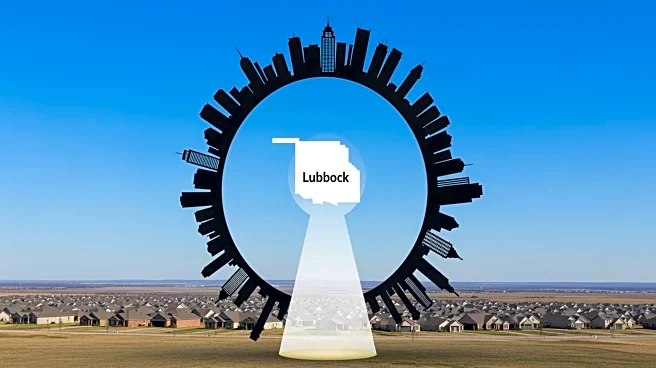What's Happening?
Recent data from Realtor.com indicates a significant interest in Oklahoma City real estate from various U.S. metropolitan areas. The scarcity of homes on the market nationwide, which remains below pre-pandemic
levels, has kept home prices elevated despite a slowdown in sales over the past year. This has led to increased online house hunting, with 97% of homebuyers utilizing online platforms according to a 2021 National Association of Realtors report. The cross-market demand data from Q3 2025 shows that Dallas, TX, leads with a 28.7% view share of Oklahoma City properties, followed by Chicago, IL, at 10.2%, and Tulsa, OK, at 5.8%. Other cities showing interest include Wichita, KS, Phoenix, AZ, Denver, CO, Los Angeles, CA, Houston, TX, Fayetteville, AR, and Stillwater, OK.
Why It's Important?
The heightened interest in Oklahoma City from major metros like Dallas and Chicago suggests potential shifts in population dynamics and housing market trends. As home prices remain high due to limited inventory, buyers from more expensive markets may be seeking affordable alternatives, impacting local economies and real estate markets. This trend could lead to increased demand for housing in Oklahoma City, potentially driving up prices and influencing urban development. Real estate professionals and policymakers may need to address these changes to accommodate the influx of new residents and ensure sustainable growth.
What's Next?
As interest in Oklahoma City continues to grow, real estate developers and city planners may need to consider expanding housing options to meet demand. This could involve new construction projects or revitalization of existing properties. Additionally, local governments might explore policies to manage growth and maintain affordability. Stakeholders, including real estate agents and community leaders, will likely monitor these trends closely to adapt strategies and capitalize on the increased interest from out-of-state buyers.
Beyond the Headlines
The movement of homebuyers from larger metros to Oklahoma City could have broader implications for regional demographics and economic development. This trend may influence cultural shifts, as new residents bring diverse perspectives and contribute to the local community. Additionally, the influx of buyers could stimulate job creation and business opportunities, further enhancing the city's appeal as a desirable place to live and work.












